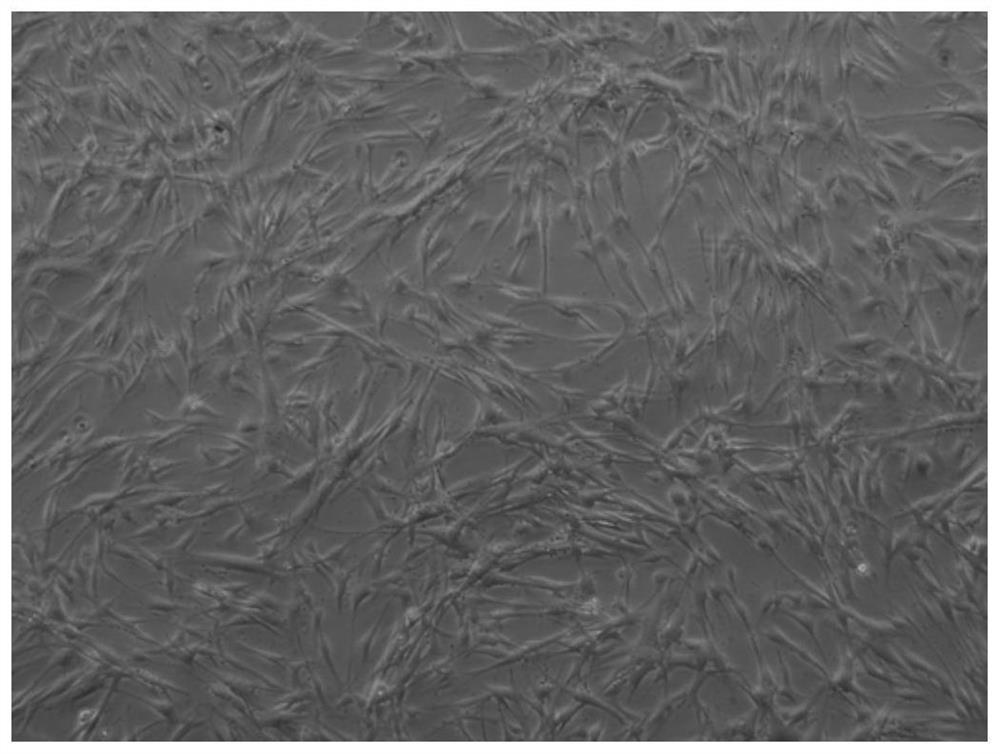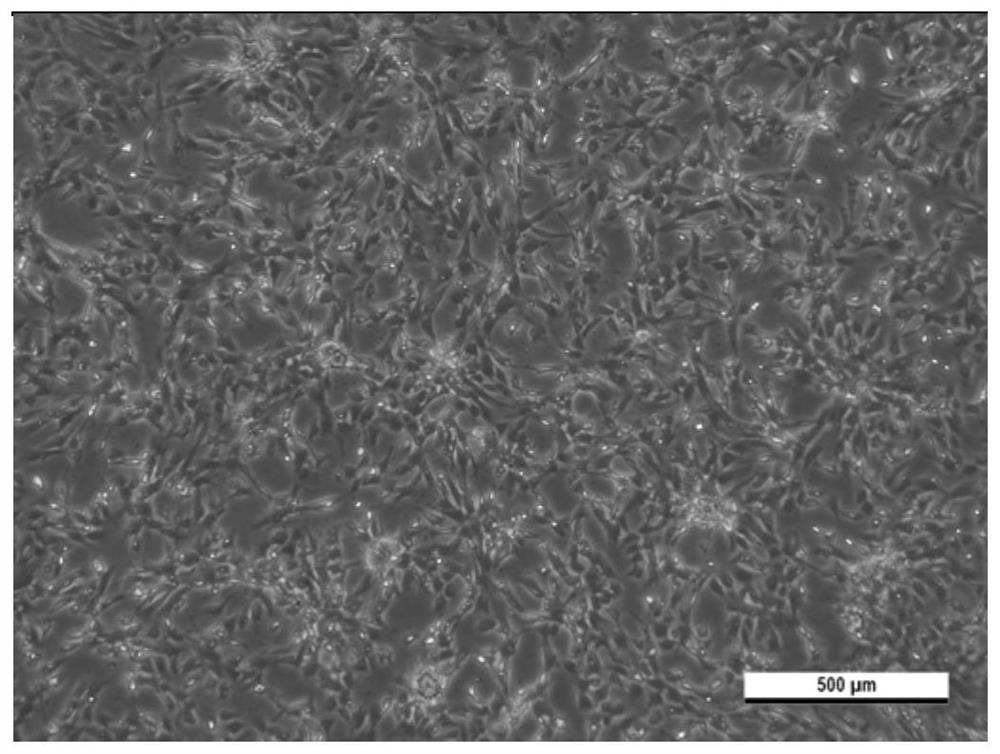Preparation method and application of parietal decidua subtotipotent stem cells
A technology of subtotipotent stem cells and decidua parietal, applied in the field of preparation of subtotipotent stem cells in parietal decidua, can solve the problems of limiting the application of subtotipotent stem cells, hindering the extraction of subtotipotent stem cells, and low activity of subtotipotent stem cells, and achieving strong differentiation ability , the effect of rich sources and large quantities
- Summary
- Abstract
- Description
- Claims
- Application Information
AI Technical Summary
Problems solved by technology
Method used
Image
Examples
Embodiment 1
[0032] A method for preparing subtotipotent stem cells in decidua wall, comprising the following steps:
[0033] (1) Pretreatment: Take out the parietal decidua tissue from the collection bag, wash it with tissue cleaning solution until there is no blood residue, then put the cleaned placenta tissue into a 50mL sterile centrifuge tube, centrifuge at 1200rpm for 5min, removing the supernatant; wherein, the cleaning solution includes: physiological saline, red blood cell lysate with a volume fraction of 50%, gentamicin sulfate at 10 μg / ml, and amphotericin B at 10 μg / ml.
[0034] (2) Digestion: Cut the cleaned parietal decidua tissue into 0.1-1cm with sterile direct scissors 3Add an equal volume of tissue digestion solution preheated to 37°C, mix well, shake and digest in a constant temperature shaker at 37°C for 2 hours at a speed of 200r / min, centrifuge quickly and transiently after digestion, collect the supernatant, and pour Add normal saline to the precipitate to resuspend...
experiment example 1
[0046] The P0 generation cell and the P3 generation cell count of embodiment and comparative example gained, the result is as shown in table 1:
[0047] Table 1 Subtotipotent stem cell count table of parietal decidua
[0048]
experiment example 2
[0050] Identification of osteoblast differentiation ability:
[0051] Subtotipotent stem cells of the P3 generation in Example 1 were divided into 2×10 4 Inoculate in a 24-well plate at a concentration of / mL, 1 mL per well, and replace the osteoblast differentiation induction medium every 3 days. Semethasone 10nM / mL, β-glycerol phosphate 10M / mL, antibiotic 1wt%, cytokine IL-β 25ng / mL, ascorbic acid 105mM / mL, isoflavone 10μg / mL. Cultivate until the 14th day, discard the medium, wash twice with PBS, fix with 4% paraformaldehyde for 20 minutes, and stain with Alizarin Red. After staining for 20 minutes, wash twice with normal saline to observe the formation of calcium nodules Obviously, it shows that the subtotipotent stem cells in Example 1 can effectively differentiate into osteoblasts.
PUM
 Login to View More
Login to View More Abstract
Description
Claims
Application Information
 Login to View More
Login to View More - R&D
- Intellectual Property
- Life Sciences
- Materials
- Tech Scout
- Unparalleled Data Quality
- Higher Quality Content
- 60% Fewer Hallucinations
Browse by: Latest US Patents, China's latest patents, Technical Efficacy Thesaurus, Application Domain, Technology Topic, Popular Technical Reports.
© 2025 PatSnap. All rights reserved.Legal|Privacy policy|Modern Slavery Act Transparency Statement|Sitemap|About US| Contact US: help@patsnap.com



